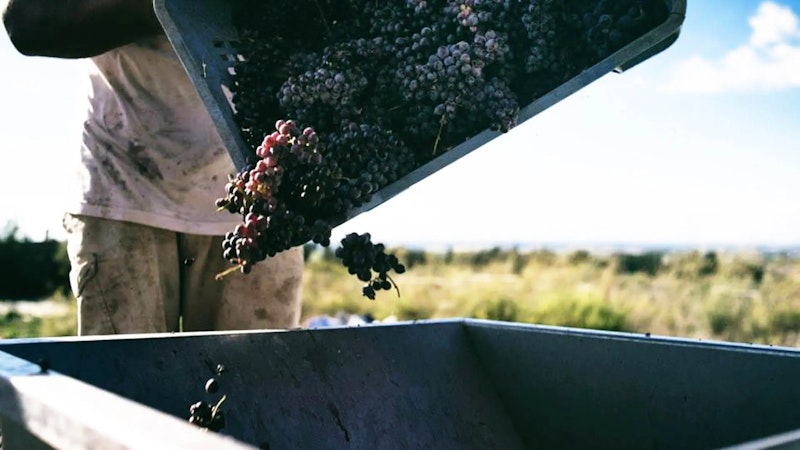Sagrantino di Montefalco: thrill and sanctity
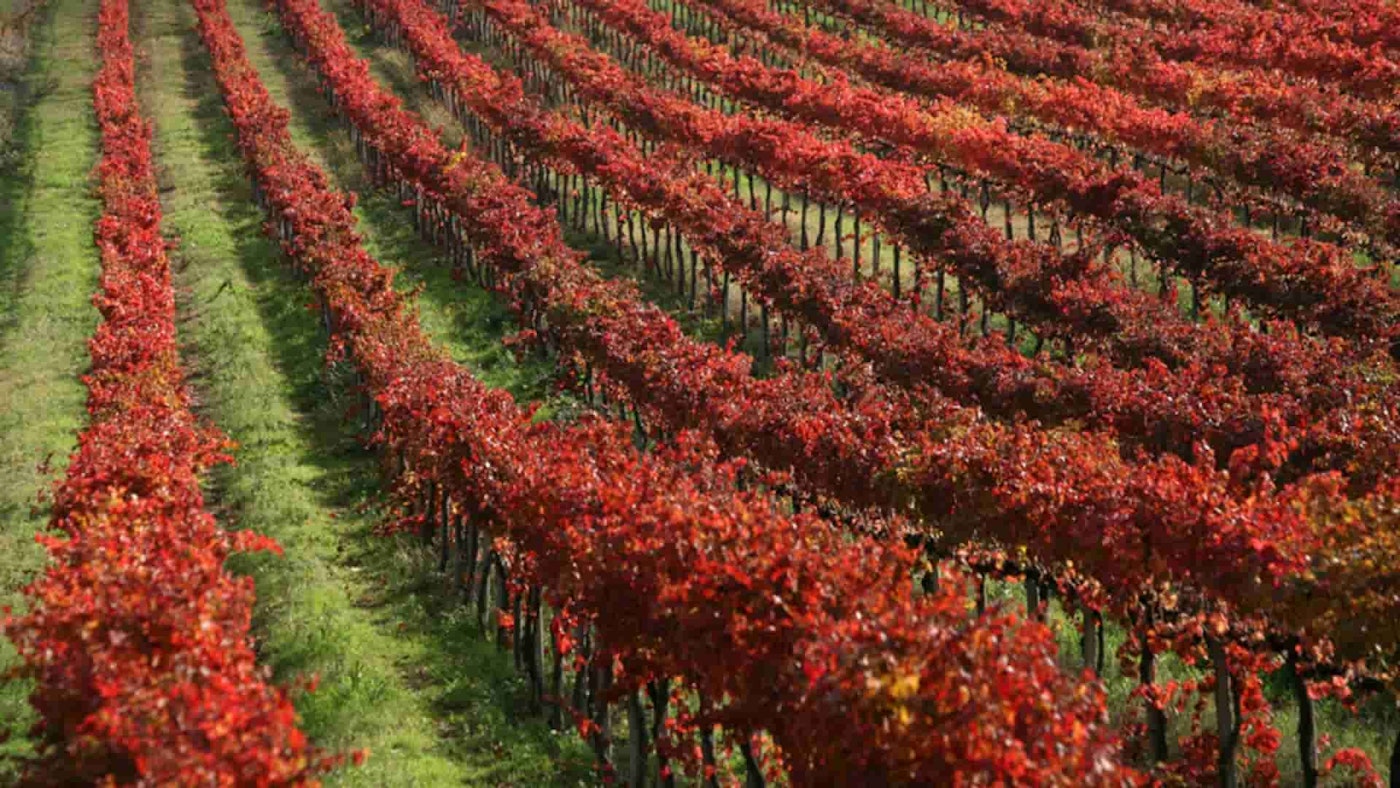
In 1568, it was renamed the "Balcony of Umbria" for its beauty and picturesque views: from the panoramic viewpoints of Montefalco, on clear days, one can admire the gentle hills covered with olive groves and vineyards, one can see the medieval beauty of Assisi, Spello, Foligno, Trevi, Spoleto, Gualdo Cattaneo, Bevagna, Perugia and, in the distance, one can see the Apennine, Subasio and Martani Mountains. Situated on a hilltop overlooking the plain of the Topino and Clitunno rivers, Montefalco is the City of Wine and the City of Oil, famous because it is the home of many saints, including the Augustinian mystic Santa Chiara della Croce (1268-1308), for the frescoes in its Churches, for its Sanctuaries, for its singular spirituality and tranquillity and for its wine, first and foremost Montefalco Rosso Doc and Sagrantino di Montefalco Docg, two wines that fully represent the essence of their terroir. In fact, much more so because thanks to its wines, Montefalco and the surrounding areas have experienced a tourism renaissance that represents one of Italy's most striking case histories.
SAGRANTINO & “FRIENDS”
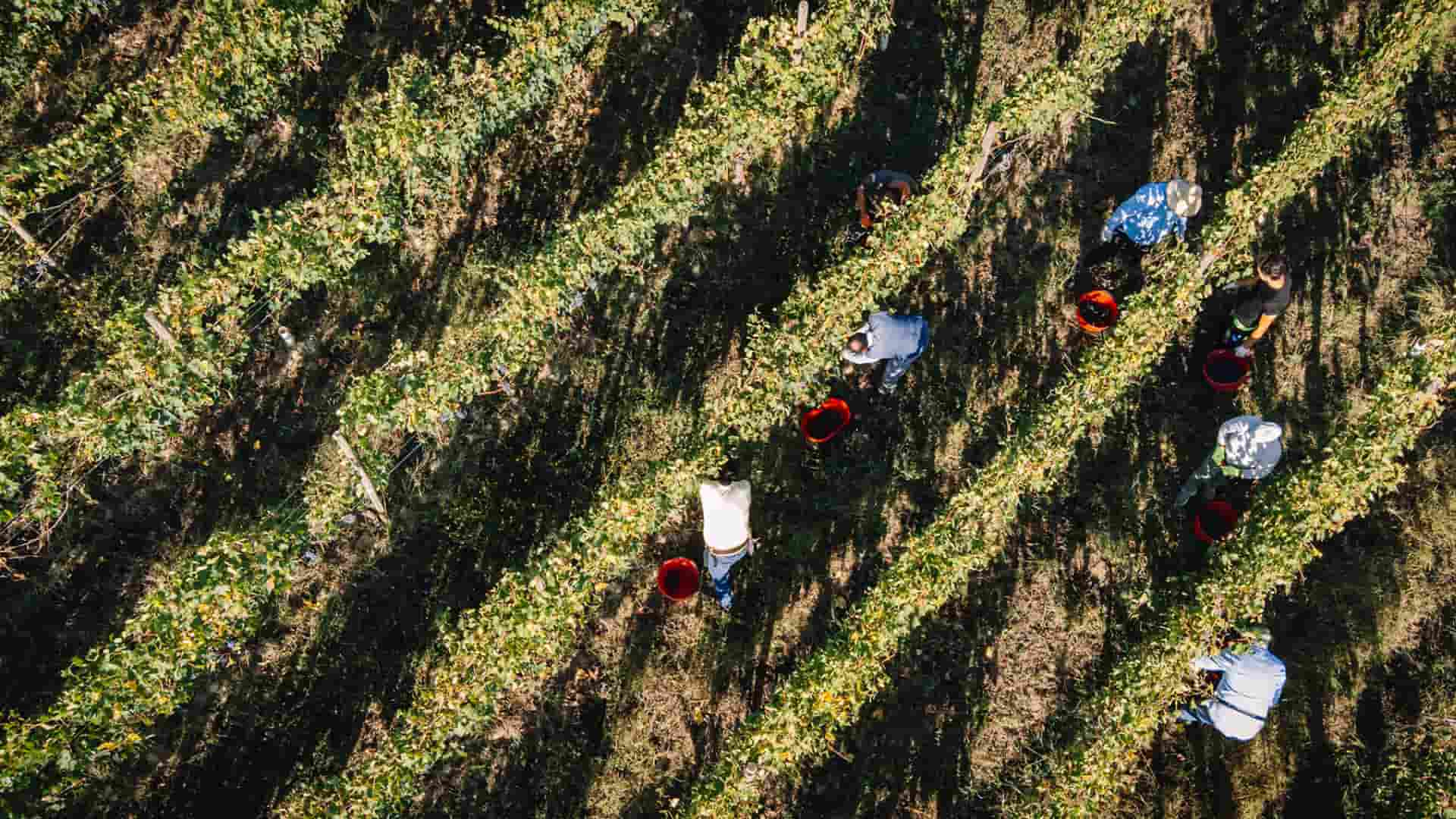
Sagrantino is an indigenous grape variety whose cultivation can be traced back to the first Franciscan friars who used it, as the name suggests, for the "sacraments". In 1451, the well-known Florentine painter Benozzo Gozzoli, called by the Franciscans to fresco the apse of their church, possibly alluded to Sagrantino when painting the bottle of red wine on the table of the knight from Celano, in the frescoes dedicated to the life of St. Francis. A very important date is 1549, the year in which the first document found that expressly mentions Sagrantino dates back: it was an order for Sagrantino must from the Jew Guglielmo, a merchant from Trevi, and his wife Stella. During the Umbrian Exposition of 1899, Sagrantino gained official recognition as a ‘superior dessert or table wine’. As with many other great pearls of international oenology, in fact, Sagrantino's earliest history is linked to the production of sweet wines, but it is the more recent ‘dry’ version that has consecrated this wine on the scene of the great Italian reds. Thanks to this new course, Sagrantino started its contemporary history, obtaining DOC recognition in 1979 and DOCG in 1992.
Sagrantino grapes are present in blends (10 to 15%) in Montefalco Rosso, which is predominantly composed of Sangiovese (60 to 70%), to which other indigenous grapes are added up to a maximum of 30% (typically Merlot or other red grapes authorised for the province of Perugia), and can only be marketed after an ageing period of at least 18 months. Longer ageing gives rise to Montefalco Rosso Riserva.
Alongside the production of red wines, a request was made for the denomination of Montefalco Bianco, to which the most widespread grape varieties in the area contribute: Grechetto, Trebbiano Toscano and Trebbiano Spoletino. Hence the request for a denomination that envisaged Grechetto as the main grape variety (greater than 50%) flanked by Trebbiano (20%-30%) and a portion of other non-aromatic white grapes, which was accepted by the Ministry for Agricultural, Food and Forestry Policies with the Ministerial Decree of 31/07/1993.
PRODUCTION AREA
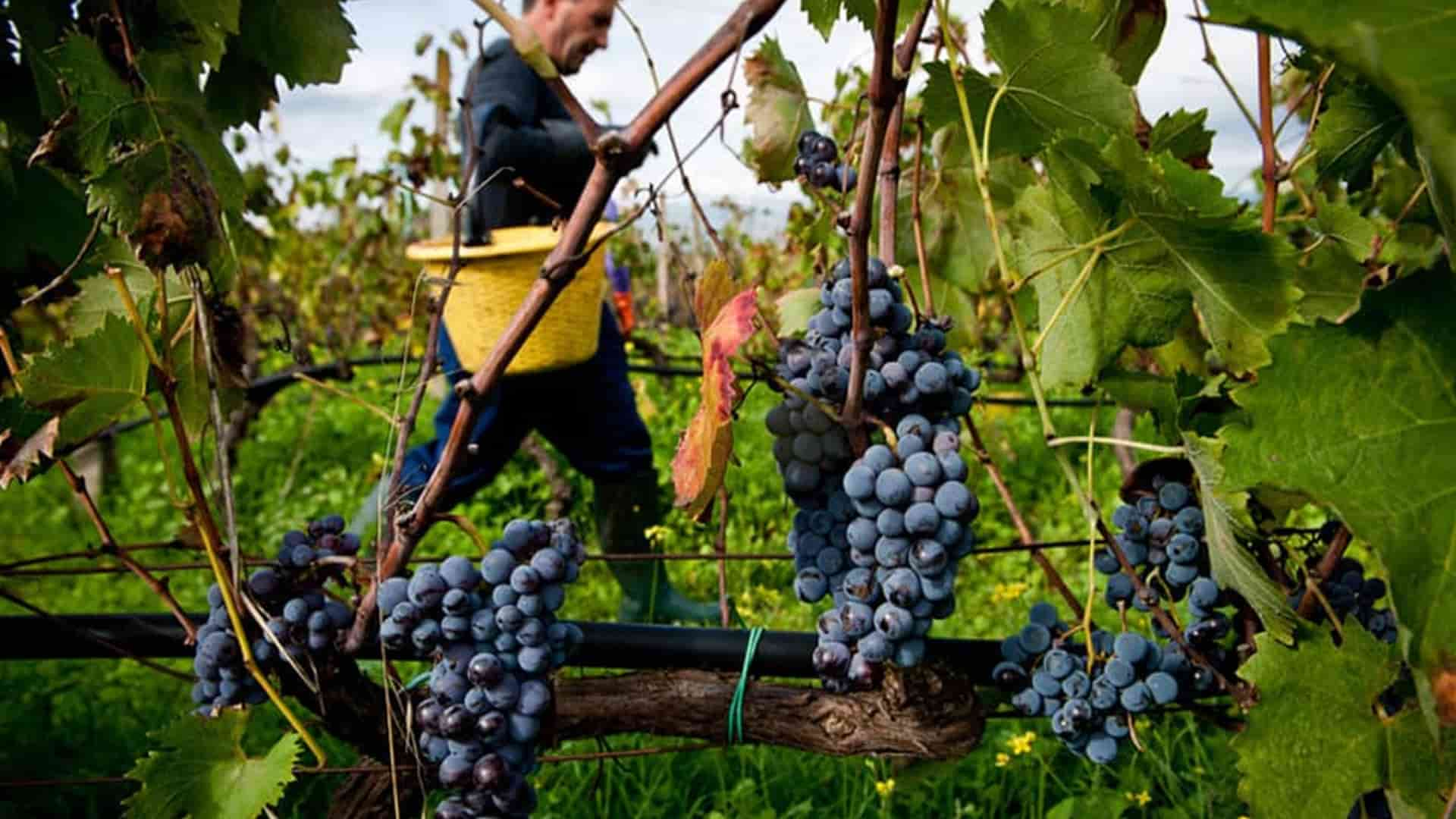
The geographical area of production of Montefalco wines embraces the entire municipality that gives it its name and includes Bevagna, Giano dell'Umbria, Gualdo Cattaneo and Castel Ritaldi, in the province of Perugia. This is a very small production area, with soils that slope gently along hilly contours guarded by ancient medieval villages. The soils are of a clear clay-limestone matrix, sometimes deeper and sometimes lighter, with a generally limited presence of skeleton. The altitude range for cultivation varies from 220 to 472 metres on the highest hillsides, while the slope of the vineyard plots and the general exposure is variable, creating a wide range of microclimates and growing conditions. Sagrantino, planted on 660 hectares, records an average annual production of 1.7 million bottles, while Montefalco Doc, planted on 430 hectares, produces about 2.2 million bottles. To promote the famous red wine, a food and wine and cultural itinerary has been set up called "La strada del Sagrantino" (The Sagrantino Wine Road), which winds its way through five villages resplendent with art, unique flavours and fragrances: Montefalco, Bevagna, Giano dell'Umbria, Gualdo Cattaneo, and Castel Ritaldi.
THE DOC SPOLETO AND THE CONSORTIUM FOR THE PROTECTION OF MONTEFALCO WINES
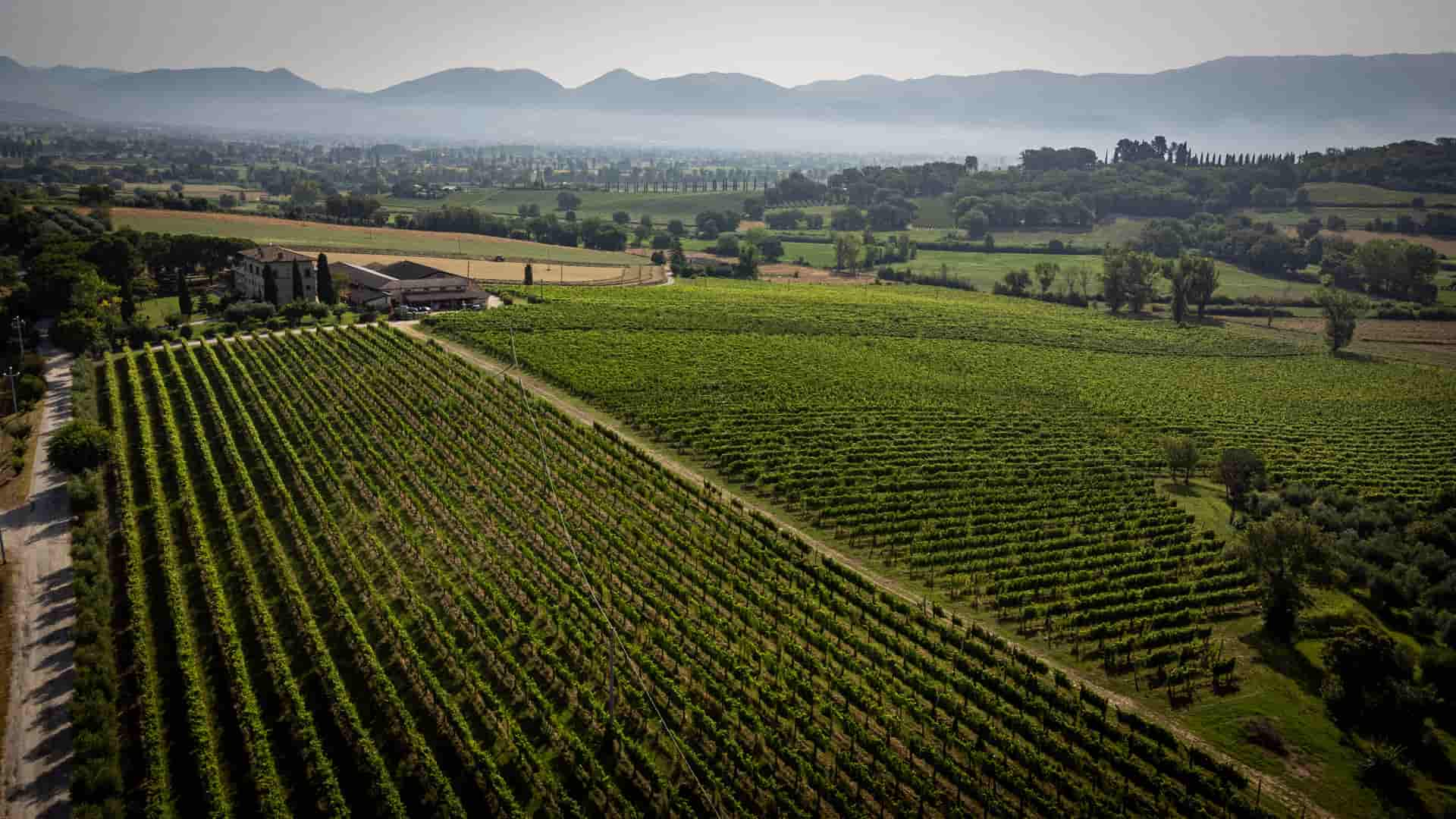
The Spoleto DOC in 2019 was added to the denominations and protected by the Consorzio Tutela Vini Montefalco. This is a very important milestone for both denominations, thanks to which it will be possible to develop common strategies for the protection and promotion of the wines obtained from Sagrantino and Trebbiano Spoletino, which share an undisputed uniqueness and extraordinary longevity, as well as a territory that is unique in the world for its history, culture and landscape. "Thanks to this important step, we complete the protection and image of an area that boasts native varieties of great value", says Filippo Antonelli, president of the Consorzio Tutela Vini Montefalco, "with a very heterogeneous and increasingly interesting basket: In addition to the great reds, Sagrantino in primis, but also Montefalco Rosso and Montefalco Rosso Riserva, there are the white wines, which are enjoying increasing success: Montefalco Bianco, which increasingly sees Trebbiano Spoletino as the protagonist, Montefalco Grechetto and now the Spoleto DOC, which includes numerous wineries and municipalities, including obviously Spoleto, which gives its name to the denomination’". The Spoleto DOC includes Spoleto Bianco, Spoleto Trebbiano Spoletino, Spoleto Trebbiano Spoletino Superiore, Spoleto Trebbiano Spoletino Spumante and Spoleto Trebbiano Spoletino Passito. Trebbiano Spoletino is achieving great success, testifying to the importance of the variety and to an area with a vocation for great whites as well as great reds. ‘The production of Trebbiano Spoletino is a fast-growing reality,’ continues Antonelli, ‘thanks to the very high quality of the wines obtained; production is well below demand. The wine is highly appreciated, especially on foreign markets. The Consorzio Tutela Vini Montefalco was founded in 1981 and has the task of coordinating the companies in the area and leading them in the constant search for quality and the valorisation of the wines of their territory.
THE WINES
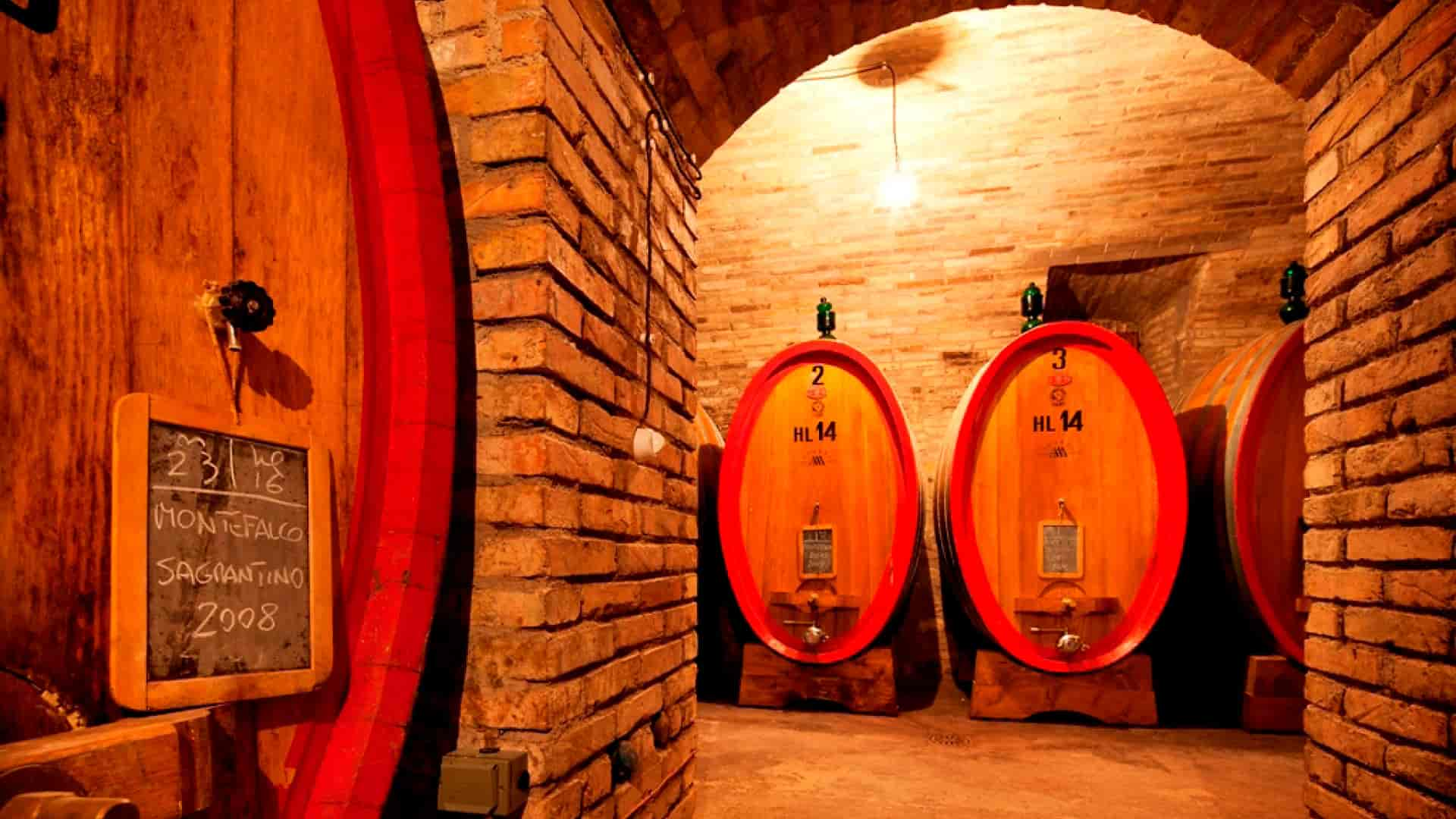
Sagrantino di Montefalco dry Docg
It is a wine of great structure obtained exclusively from Sagrantino grapes. Thanks to its extremely rich polyphenol and tannin content, this wine has extraordinary longevity. It requires a long period of ageing in wood first, then in the bottle. To the eye, it has an intense ruby red colour, sometimes with violet reflections and tending to garnet with ageing. On the nose, it has characteristic notes of blackberries, which are found in the mouth together with aromas of berries.
Pairings: mature cheeses, stewed and braised meats, noble game.
Sagrantino di Montefalco passito Docg
The traditional passito is also made from the grapes of the same name. The grapes are carefully selected and dried on racks for at least two months. It is then vinified by fermenting the must with the skins. This produces a very special raisin wine because, although it is a sweet wine, it remains dry thanks to its tannin content. Intense ruby red in colour, with violet or garnet hues, it is fruity on the nose and has aromas of morello cherry, chocolate, sometimes tobacco and sweet spices on the palate.
Pairings: chocolate desserts, dark chocolate, dry pastries, cheeses.
Montefalco Rosso Doc
A characteristic ruby red colour, it displays delicate, vinous aromas, making it easy-drinking and captivating. Pleasantly dry in the mouth with fruity notes, which lighten an important but not aggressive structure.
Pairings: savoury and moderately spicy first courses, grilled meats.
Montefalco Bianco Doc
The designation calls for Trebbiano Spoletino as the main grape variety (in a quantity of no less than 50%) flanked by a proportion of other non-aromatic white grapes. The aromas and flavours conferred by Grechetto are accompanied by the typical freshness of Trebbiano. Bright straw yellow in colour, it is distinguished by its vinous and fruity aromas. Pleasantly dry in the mouth with fruity notes, easily recognisable and appreciable for its good structure.
Pairings: starters, soups, risottos, carpaccio, ham, cured meats, sushi, fish and white meats.
Montefalco Grechetto Doc
A white wine characterised by Grechetto, a white grape and one of the most cultivated indigenous varieties in Umbria. Intense aromaticity, good structure in the mouth and citrusy acidity.
Pairings: cold cuts, porchetta, fresh cheeses, legume and cereal soups, first courses, rustic pies, stews.
Spoleto Trebbiano Spoletino Doc
The organoleptic characteristics of this wine include a straw-yellow colour, sometimes with greenish reflections, a delicate olfactory profile, while on the palate it is dry, savoury, fresh and slightly aromatic.
Pairings: raw fish, white meat, vegetable dishes.





